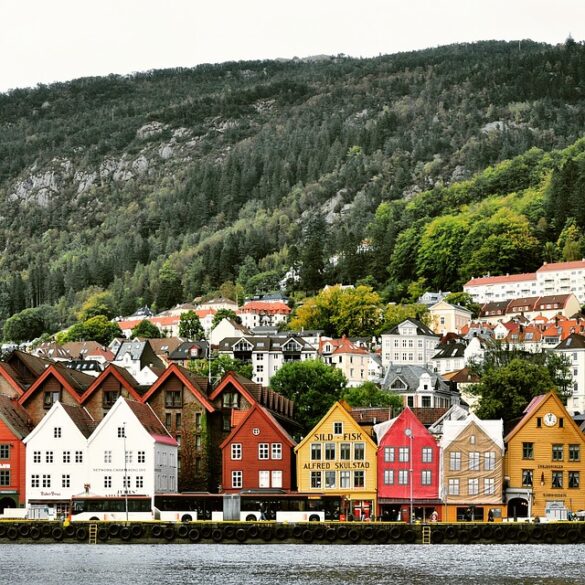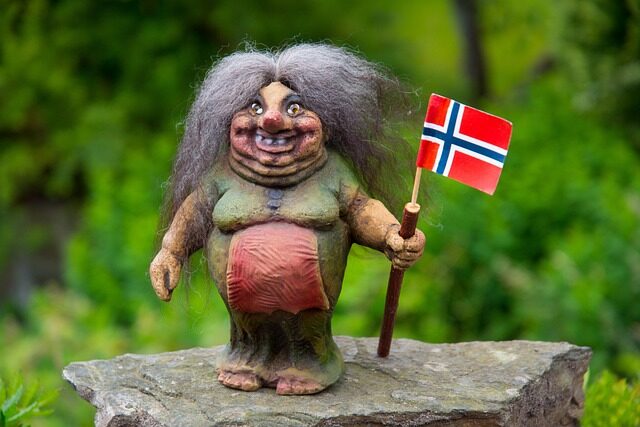The Harryhandel: Some Modern Norwegian Culture
Norway’s culture is continually evolving, with unique practices such as the Harryhandel playing a significant role in modern life. This distinctive phenomenon encapsulates the Norwegian spirit of practicality and adventure. But what is the Harryhandel, and why does it hold such cultural significance? Let’s delve into the heart of modern Norwegian culture and explore how this practice reflects today’s consumer habits and traditional customs.
From border shopping to celebrations like December’s festive traditions, Norway’s culture offers an intriguing blend of old and new. Scandinavian immigrants have carried these traditions across the ocean, leaving an indelible mark on U.S. culture. As we examine Norway’s cultural landscape, we’ll discover how the simple act of shopping can reveal much about a society’s values and way of life.
- What is the Harryhandel and its significance in Norwegian culture?
- How does the Harryhandel reflect modern consumer habits in Norway?
- What are the best items to purchase during the Harryhandel?
- How do Scandinavian immigrants influence Norwegian culture in the U.S.?
- What are traditional Norwegian customs celebrated during December?
- How is Friluftsliv embraced in modern Norwegian society?
- What is the Harryhandel and its significance in Norwegian culture?
- How does the Harryhandel reflect modern consumer habits in Norway?
- What are the best items to purchase during the Harryhandel?
- How do Scandinavian immigrants influence Norwegian culture in the U.S.?
- What are traditional Norwegian customs celebrated during December?
- How is Friluftsliv embraced in modern Norwegian society?
What is the Harryhandel and its significance in Norwegian culture?
At its core, the Harryhandel is a border shopping experience unique to Norway. Norwegians cross into Sweden to purchase goods that are notably cheaper due to lower taxes. This practice is not merely about shopping; it’s embedded in the cultural fabric, representing a savvy approach to economics and a love for a good deal.
The term ‘Harryhandel’ is not just casual slang; it’s a word that conveys a certain pride in outsmarting the high cost of living. It’s a social event where families and friends can bond over the shared goal of frugality and enjoyment.
Despite being a practical endeavor, the Harryhandel has garnered attention on Norwegian television, highlighting its prevalence in society. The popularity of items like cheese, meat, and sweets such as Capri Sun drinks shows the selective purchasing habits of Norwegians and offers a glimpse into their consumer preferences.
While it may seem like a simple shopping trip, the Harryhandel carries a deeper cultural significance. It’s a modern-day ritual that reinforces national identity and showcases a collective ingenuity in the face of economic challenges.
How does the Harryhandel reflect modern consumer habits in Norway?
The Harryhandel is not only about saving money; it’s a reflection of modern consumer habits in Norway. The thrifty nature of Norwegians is manifested in this practice, illuminating the value placed on economic sensibility and sustainability.
The allure of the Harryhandel extends beyond mere cost savings. It’s a testament to the Norwegian ethos of moderation and balance, where quality of life is measured in experiences as much as in possessions.
Consumer trends observed during these shopping trips reveal preferences for products that offer both quality and value. This highlights a broader trend in Norwegian society that favors mindful consumption and conscious living.

It’s interesting to note that while embracing modern conveniences, Norwegians maintain a connection to their cultural roots through selective purchasing, which often includes traditional foods and items that celebrate their heritage.
The Harryhandel’s popularity undeniably signifies a modern society that values its economic well-being, while also finding joy in the shared experience of a collective shopping journey.
What are the best items to purchase during the Harryhandel?
For those who partake in the Harryhandel, certain items top the list of must-buys. Popular purchases include everyday commodities that offer significant savings across the border.
- Cheese: A staple in Norwegian diets, cheese varieties are much more affordable in Sweden.
- Meat: High-quality meats at lower prices attract many Norwegians looking to stock up.
- Sweets and Beverages: Items like Capri Sun drinks, chocolates, and candies are especially popular among families with children.
Notably, the choice of items reflects both economic factors and cultural preferences. Norwegians are known for their love of dairy products and meats, making these goods prime targets for cross-border shopping.
Additionally, the trend of purchasing these particular items points to a broader cultural appreciation for gatherings and meals shared with loved ones, as many of these products are often enjoyed in social settings.
The Harryhandel, therefore, is not just about the items one can buy; it’s about the experiences and traditions those items represent and the joy of providing for one’s family in the most economical way possible.
How do Scandinavian immigrants influence Norwegian culture in the U.S.?
The impact of Scandinavian immigrants on American culture is profound. Between 1825 and 1920, over 3 million Scandinavians, including a large number of Norwegians, made the United States their home. The influence of these communities is still felt today.
Cities like Minneapolis-St. Paul and Seattle celebrate their Scandinavian heritage with festivals and museums. Events such as the annual Nordic Fest in Decorah, Iowa, showcase traditional music, dance, and crafts that honor this rich cultural legacy.
Swedish and Norwegian traditions are kept alive through community gatherings, where the stories of early immigrants are shared and celebrated. This cultural persistence ensures that the essence of Scandinavian life continues to enrich the American cultural tapestry.

The presence of these vibrant communities throughout the United States is a testament to the enduring nature of Norwegian culture and its ability to adapt and thrive in a new environment.
Scandinavian immigrants have significantly contributed to the cultural heritage of cities across the U.S., creating a lasting bond between their ancestral homelands and their adopted country.
What are traditional Norwegian customs celebrated during December?
December in Norway is a time of festive traditions and celebrations. Exploring Norwegian customs in December reveals a deep reverence for heritage and the joy of the holiday season.
One of the most heartwarming traditions is the celebration of Santa Lucia Day on December 13th. This festival of light brightens the dark Scandinavian winter and is marked by processions, singing, and the sharing of saffron buns called ‘lussekatter’.
Norwegians also enjoy ‘Julebord’, a Christmas party with a sumptuous feast, alongside decorating homes with nisser, which are mischievous elf-like figures. The crafting of handmade decorations and the preparation of traditional foods like ‘risengrynsgrøt’ (rice pudding) are integral parts of the celebration.
The focus on family and community during these festivities underscores the importance of togetherness and the preservation of customs that have been passed down through generations.
These celebrations are not just a nod to the past; they are living expressions of culture that continue to evolve while honoring their roots.
From the lighting of the Advent candles to the singing of Christmas carols, December’s customs are a cherished part of Norwegian culture, offering a window into the nation’s soul during the most magical time of the year.
How is Friluftsliv embraced in modern Norwegian society?
The concept of Friluftsliv, or «free air life,» is deeply ingrained in Norwegian culture. It’s a philosophy that encourages the appreciation of outdoor activities and living in harmony with nature.

In modern Norwegian society, Friluftsliv is not just a seasonal activity; it’s a year-round commitment to outdoor exploration and recreation. Hiking, skiing, and camping are popular activities that allow Norwegians to connect with their environment and with each other.
The government supports this lifestyle through policies that ensure public access to natural spaces and by promoting outdoor education in schools. This institutional backing highlights the significance of Friluftsliv as a national value.
Friluftsliv is also evident in urban design, with cities incorporating green spaces and pedestrian-friendly areas to foster community interaction and engagement with the outdoors.
As we explore modern Norwegian culture, it’s clear that the Harryhandel and Friluftsliv are more than just practices; they are reflections of a society that values practicality, sustainability, and a deep connection to its roots.
To further enrich our understanding, let’s take a moment to watch a video that delves into the vibrant world of Norwegian culture:
The Harryhandel, some Modern Norwegian culture, continues to thrive, intertwining the practical with the celebratory, and showcasing Norway’s unique approach to life. Whether through the economic savvy of border shopping or the joyous traditions of December, the soul of Norway shines through its customs, both old and new.

